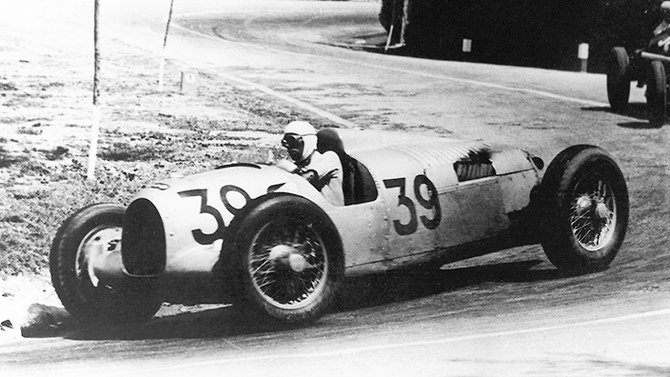The glorious W196, cutaway;



MERCEDES W25Story[edit]
In 1958 Alfred Neubauer's biography was published, and he described the origin of the Silver Arrows as being accidental. In 1934 the international governing body of motor sport prescribed a maximum weight limit of 750 kg for Grand Prix racing cars, excluding tyres and fuel. Neubauer said that when in spring 1934, the Mercedes-Benz team placed its new Mercedes-Benz W25 on the scrutineering scales prior to the Eifelrennen at the Nürburgring, it allegedly recorded 751 kg (1,656 lb). Racing manager Alfred Neubauer and his driver Manfred von Brauchitsch, who both later published their memoirs, claimed that they had the idea of removing all the white paint from the bodywork. The story continues that the next day the shining silver aluminium beneath was exposed and scrutineering was passed. After the 350 hp (260 kW) car of Von Brauchitsch won the race, the nickname Silver Arrow was born, according to this version.
Controversy[edit]
This story did not appear until 1958, and no reference to it has been found in contemporary sources. It has since been established that von Brauchitsch had raced a streamlined silver SSKL on the AVUS in 1932, which was called a Silver Arrow in live radio coverage. Also, in 1934, both Mercedes and Auto Union had entered the Avusrennen with silver cars, but neither had been able to start that race. The next big event was the 1934 Eifelrennen, but as few cars complying to the new rules were ready, it was held for Formule Libre, so weight was still not a race-critical issue at that time.[1]
By the 1930s, modern stressed-skin aircraft fuselage construction was already using polished and unpainted aluminium panels for streamlining and to save weight. Also the wealthy motor-racing fraternity would have been aware that in Heraldry, White and Silver are the same colour or 'tincture', described as 'Argent'; (similarly Yellow and Gold are both called 'Or').
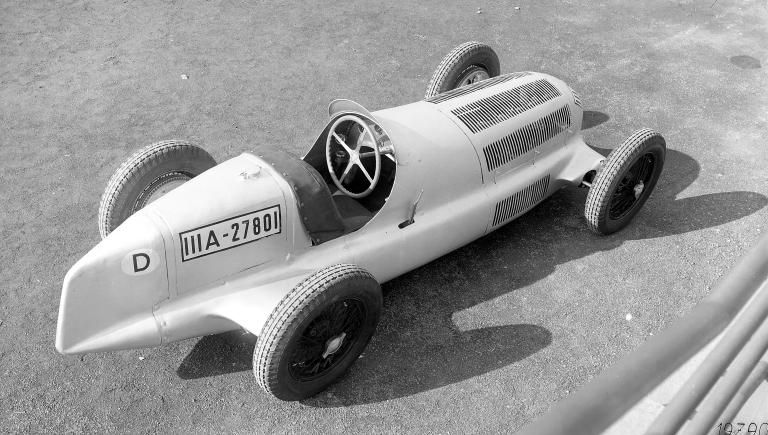
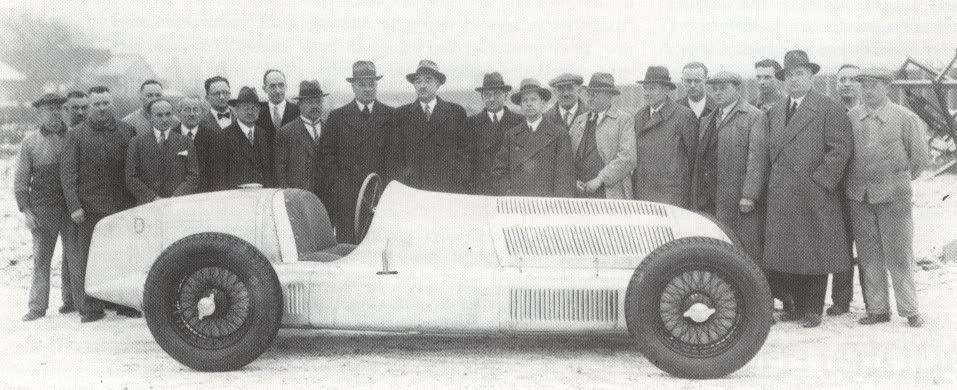
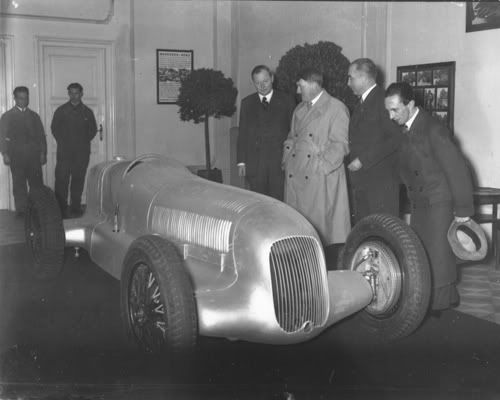
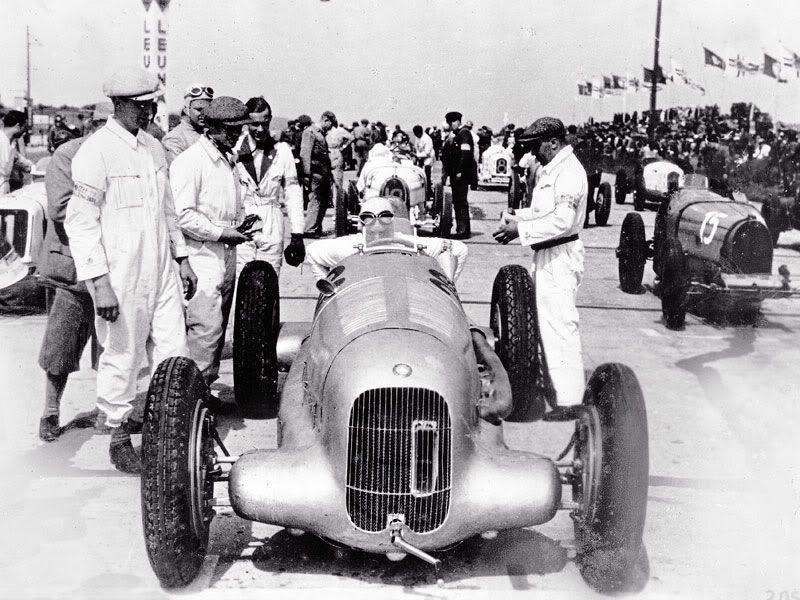
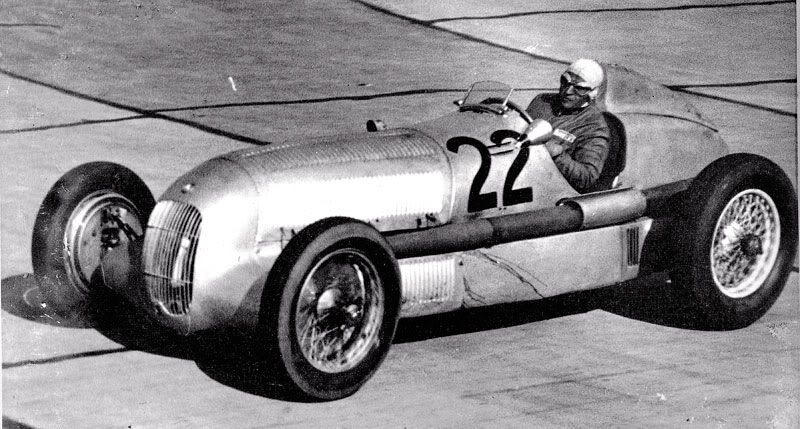
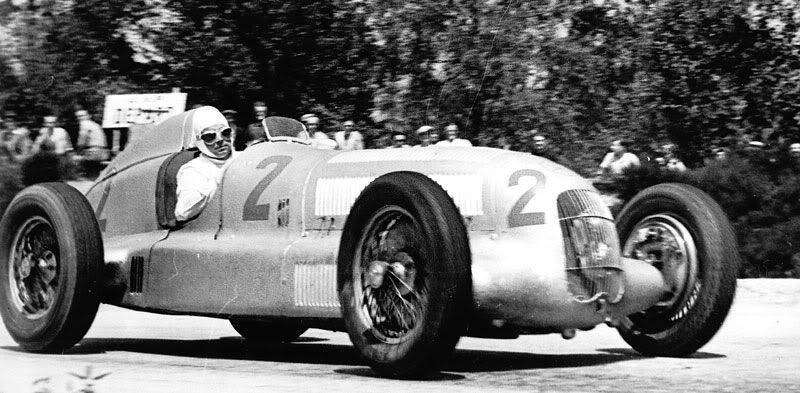
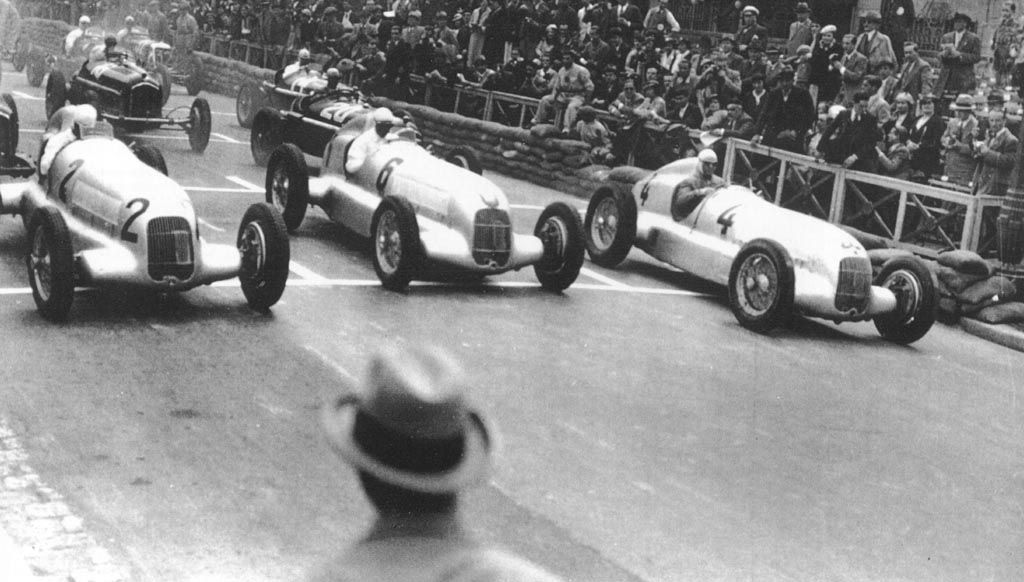
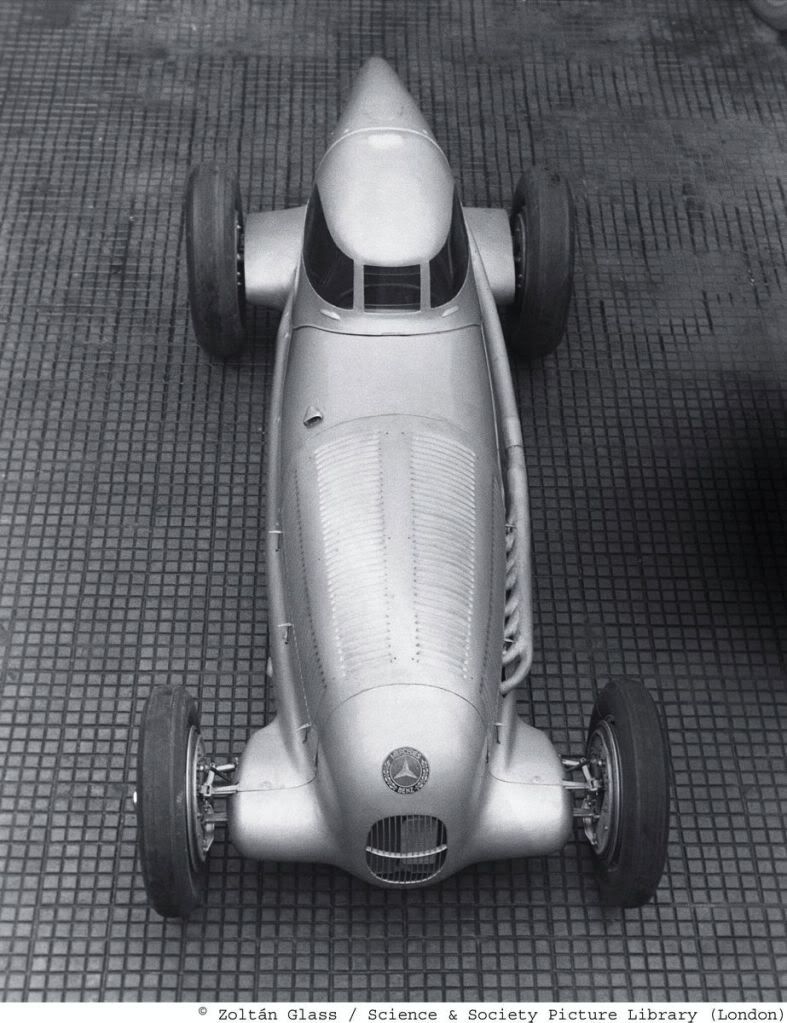
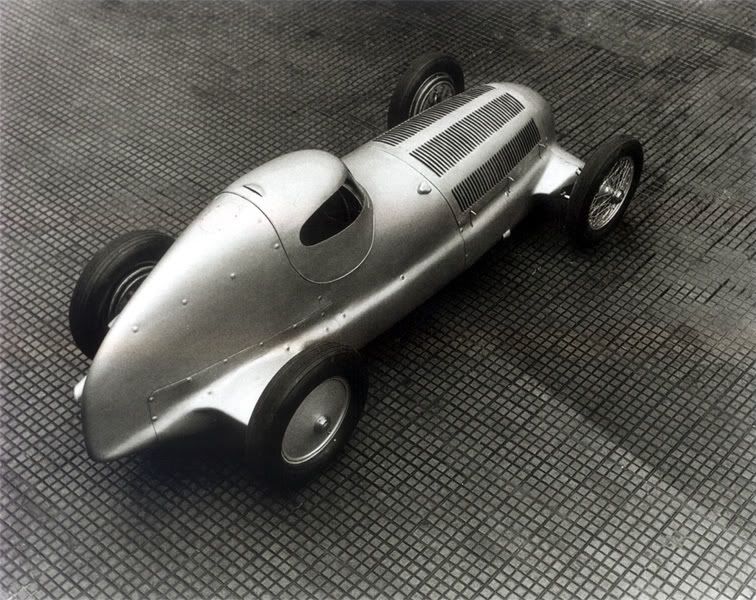






The supercharged engine, with 8 cylinders in line (94.0 x 102.mm) and 5,662.85 cc (345.56 CID), attained an output of up to 595 horse power (444 kW) in race trim. The highest test bed power measured was 637 BHP (646 PS) at 5,800 rpm. It gave 245 BHP (248 PS) at a mere 2,000 rpm. In 1938, the engine capacity of supercharged Grand Prix cars was limited to 3000cc, and the W125 was replaced by the Mercedes-Benz W154.



The W125 was considered the most powerful race car ever for about 3 decades, until large capacity US-built V8 engines in CanAm sportcars reached similar power in the mid 1960s. In Formula One racing itself, the figure was not exceeded until the early 1980s, with the appearance of turbo-charged engines in Formula One.
The W125 reached race speeds of well over 300 km/h (190 mph) in 1937, especially on the AVUS in Berlin, equipped with a streamlined body.
In land speed record runs, a Mercedes-Benz W125 Rekordwagen was clocked at 432.7 km/h (268.9 mph) over a mile and a kilometer. This car was fitted with a DAB V12 engine (82.0 x 88 mm) of 5,576.75 cc (340.31 CID) with a power of 726 BHP (736 PS) at 5,800 rpm.
The W154 competed in the 1938 and 1939 Grand Prix seasons and was used by Rudolf Caracciola to win the 1938 European Championship.
The W154 was created as a result of a rule change by the sports governing body AIACR, which required supercharged engine capacities to be limited to 3000cc. Mercedes' previous car, the W125 used a 5700cc engine and was therefore ineligible to be entered. Mercedes decided that a new car, designed from the outset to comply with the new regulations would be preferable to modifying the existing car and thus designed the W154.
Although using the same chassis design as the 1938 car, a different body was used for the 1939 season and the M154 engine used during 1938 was replaced by the M163. As a result of the new engine, the 1939 car is often mistakenly referred to as a Mercedes-Benz W163.
For the 1938 season, Grand Prix racing's governing body AIACR moved from a formula limited by weight to one limited by engine capacity. This meant Mercedes-Benz's previous car, the W125, was not eligible for entry into 1938 Grands Prix. When designing the new car, Mercedes based the chassis on that used in the W125. The new engine regulations allowed a maximum capacity of 3000cc with a supercharger or 4500cc without. After testing both types, Mercedes chose to use a supercharged 3000cc variant
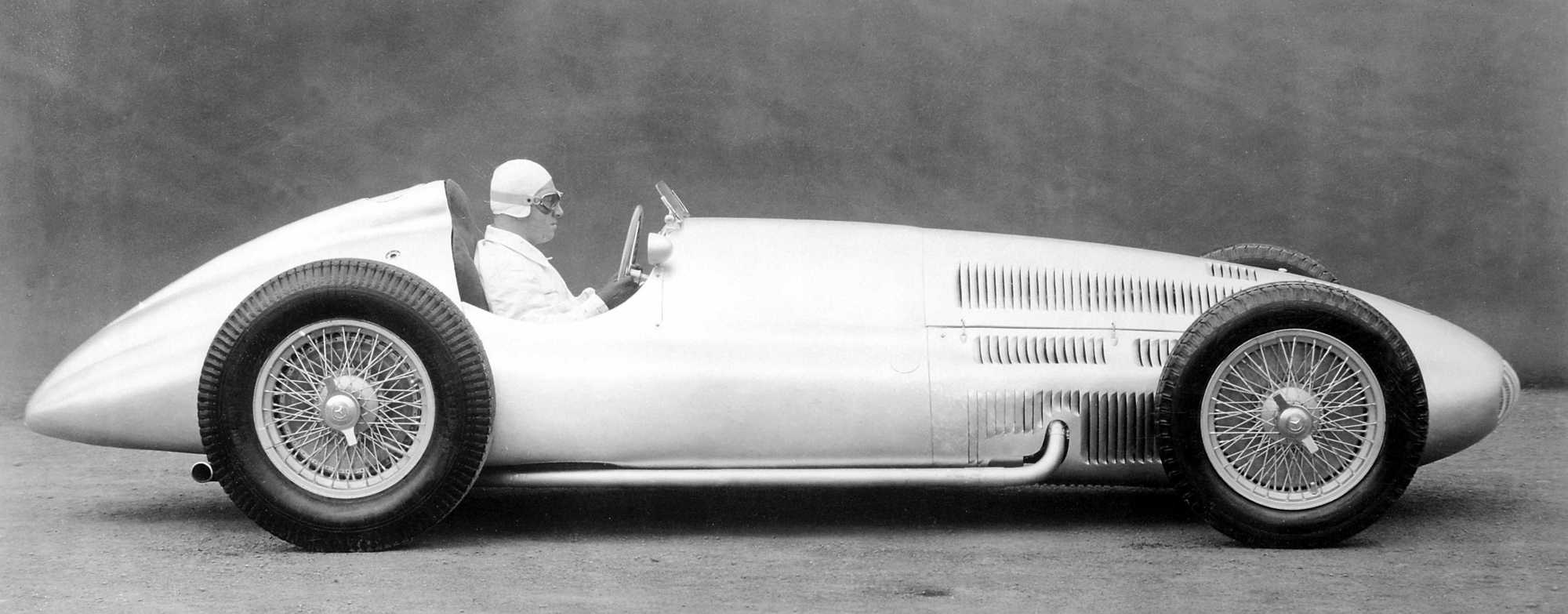



So maybe we see some replicas...Today, it is believed that most of the cars were probably reduced to scrap, and that no Type A or Type B cars exist today. Presently it is believed that only one Type C and three Type D cars, and a Type C/D hill climbing car remain

